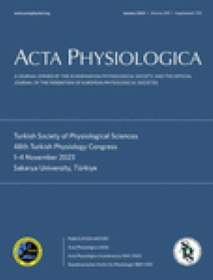Transduction Mechanisms for Cold Temperature in Mouse Trigeminal and Vagal Ganglion Neurons Innervating Different Peripheral Organs
Abstract
Aim
To elucidate the molecular mechanism of cold sensing by visceral sensory endings, a side-by-side characterization of cold-sensitive (CS) neurons in adult mouse trigeminal (TG) and vagal ganglia (VG) was performed.
Methods
A combination of physiological, pharmacological, molecular, and genetic tools was employed on trigeminal and vagal neurons.
Results
CS neurons are more abundant in VG, and the majority co-express TRPA1. Cold-evoked responses are severely blunted in Trpa1 KO mice. In contrast, TRPM8 deletion or pharmacological TRPM8 blockade had little impact on VG cold sensitivity. In Trpm8eYFP reporter mice, VG TRPM8 expression was restricted to the rostral jugular ganglion. In vivo labeling of airway-innervating VG neurons demonstrated their enhanced cold sensitivity and higher TRPA1 expression compared to neurons innervating the stomach wall. In contrast, the majority of CS TG neurons co-express TRPM8 markers, and their cold sensitivity is reduced after TRPM8 deletion or blockade. However, pharmacological or genetic ablation of TRPA1 confirmed its contribution to high-threshold cold sensitivity in TG, suggestive of a role in noxious cold sensing. In both ganglia, a fraction of CS neurons responded to cooling by a mechanism independent of TRPA1 or TRPM8. Blocking potassium channels enhanced cold sensitivity independently of the specific transducer mechanism, suggestive of a common excitability brake mechanism.
Conclusions
The study highlights the differential contribution of TRPM8 and TRPA1 channels to cold sensitivity in somatic and visceral ganglia, establishing a critical role of TRPA1 channels in visceral cold transduction. Finally, cold sensitivity seems fine-tuned to the specific physiological needs of different organs.


 求助内容:
求助内容: 应助结果提醒方式:
应助结果提醒方式:


